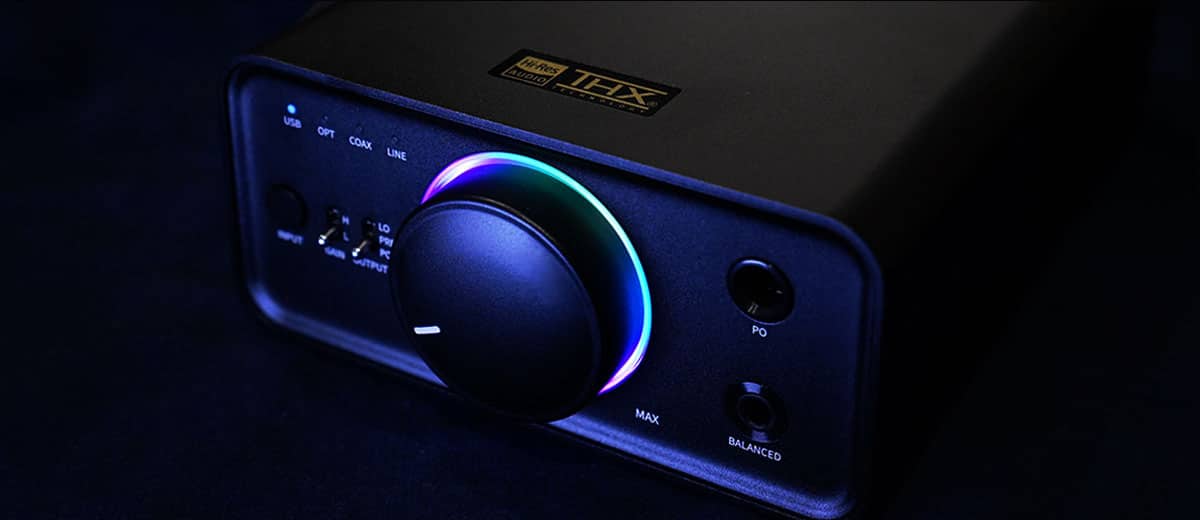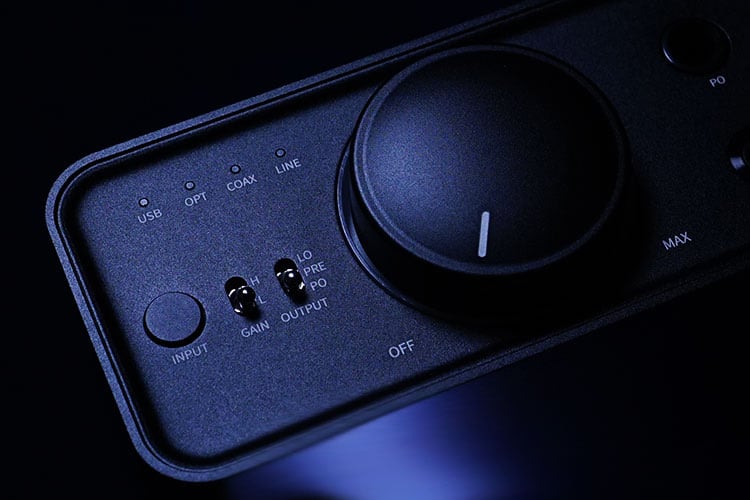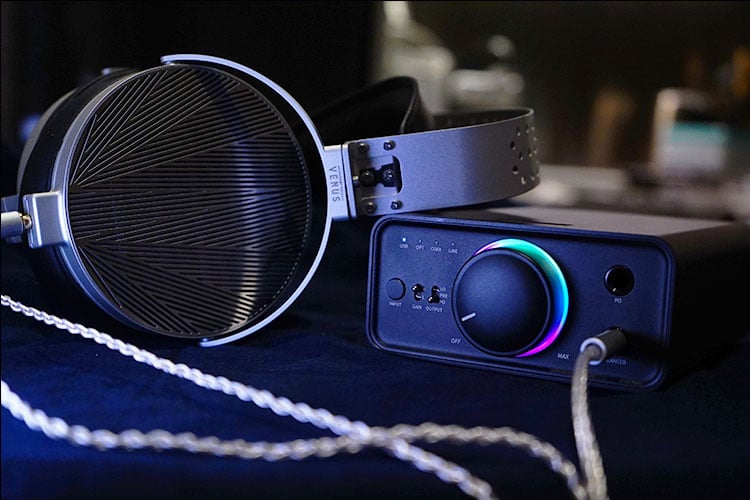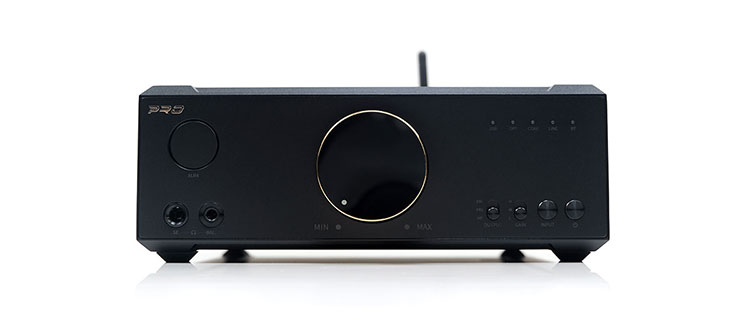Synergy
Efficiency
With power regulators implemented, background hiss on the K7 is well suppressed and even with CIEMs I barely hear any noise on low gain.
Headphones of higher impedance on high gain are still free from sibilance and there is only very faint hissing in the background with sensitive gears that could be covered up when the music is playing.
Power
FiiO keeps on pushing the bar to output more power on their amplifiers so the K7 is a powerful beast for its size.
The gain level design is well considered to not sound overly loud with sensitive gears on the low-gain setting. With the high gain, you can immediately hear stronger loudness and more forwarded treble.
The ADC volume is also friendly to sensitive gears and allows perfect channel balance even at extremely low volume, at the same time the low OI prevents impedance skews and CIEM doesn’t sound flattened.
Pairings
The output impedance is below 1Ω on both balanced and SE outputs, so I tried to pair some very sensitive IEMs like the Elysian x Effect Audio GAEA, as well as planar headphones with the K7, and it still manages to sound energetic and free from noise.
On the SE 6.35mm output, it can deliver 1220mW with a 32Ω load. So, if you have a collection of old cans or studio cans, the K7 could feed them much better than straight out of the laptop.
Sennheiser HD600
Using the HD 600 that demands good amplification power, the K7 can deliver enough swing to open the low end spaciously, while maintaining good density and separation power.
When switching to balanced output the K7 is noticeably more textured in the treble, separation and definitive power are enhanced with the stronger presence of transient tones, and the dynamics are boosted at the same time.
The stereo image is also enhanced when switching to balanced output whereas the single-ended output images the vocal body more confined.
Moondrop Venus
Testing with the Moondrop Venus planar headphone with a 4.4mm cable upgrade option the combo sounds clean and airy in the lower register, with a small hint of warmth coming from the slightly thickened mid-bass.
There is good punching power in the lower mids and a tad bit of sub-bass can still be detected. This complements the slightly boosted upper mids on the K7 well to deliver Pops, chamber music, and streamed content rhythmically.
The signature and resolution on K7 make pairing with different earphones and headphones flexible, and it pairs best with warmer-sounding gears that could well complement its clean, resolving output.
Although it has a lot of power in the mids, it does not sound congested or flattened when paired with multi-BA IEMs, and distortion control is decent even at higher volumes.
Select Comparisons
FiiO K5PRO ESS
$179
Technical
The FiiO K5PRO ESS has a compact form factor, and it features the ESS9038Q2M from ESS, offering 1.5W of output power despite being quite small.
The K7 is a comprehensive upgrade from the K5 Pro ESS with a marginally better decoding solution, balanced architecture, and upgraded components, stepping up the output to 2W and enhancing the SNR to 123db from 118dB while pressing THD to below 0.00028%.
Looking into the schematics you will realize there is much more going on in the amping circuit and the K7 is much more sophisticatedly designed.
Design
On the K7 there are LED indicators displaying the current input source that is not available on the K5 Pro ESS, the glowing ring around the volume knob also makes it look much more appealing.
The rest looks pretty like the K5 Pro, just that it is longer, with the THX badge on top and balanced output on the front panel.
You may notice the layout at the back of the device is not identical despite similar I/O options being offered, the transformer that comes with the two devices is also different as the K7 is consuming higher current.
Performance
Testing the K5 Pro ESS and K7 with the HD600, there is little difference in output power on the 6.35mm output.
The detail retrieval level is stronger on the K7, and it sounds wider and more detailed in the lows, while the K5 Pro ESS sounds smoother and slightly more forwarded in the vocal zone but less as defined.
With the THX AAA 788+ implementation and balanced architecture, the K7 has achieved a much better level of distortion control and definition than the K5 Pro ESS when switching to the 4.4mm output.
This is very audible when turning to a louder volume where the K7 can still hold together a solid image and the K5 Pro ESS will start losing control and sound more smoothened.
FiiO K9 Pro ESS
$699.99
Technical
The K9 Pro ESS uses a dual ES9038Pro DAC, the same chipsets used on the flagship DAP M17, with the same dual-channel configuration.
It also features a built-in linear PSU, LDAC Bluetooth transmission, and app control functions is the top-of-the-line product at 3 folds of the K7’s charging price.
In our earlier shootout with the K5 Pro ESS, the K9 Pro ESS is clearly outclassing the K5 Pro ESS in performance and features.
However, with the K7’s stronger specs and components derived from the K9 Pro ESS, it is intriguing to see how close the K7’s performance can get.
Design
The K9 Pro ESS doubles the mass of the K7 and is quite a lot heftier, which is not surprising as it fits in a linear transformer inside and also has more components to support its functions and connectivity.
On K9 Pro ESS there are XLS jacks that allow studio speakers to be connected, although the K7 has a 4.4mm output it does not feature balanced I/O, MQA, Bluetooth connection, etc.
The K9 Pro ESS looks a lot cooler and premium with the faceted design, but when considering the price and solid build on the K7, it does not feel like it is designed to be a much more affordable option than the K9 Pro ESS.
Performance
With the same THX AAA 788+ components implemented and 6-stage amp circuitry, the K7 and K9 Pro ESS share some interesting similarities in the output. Both amplifiers have a slightly bright signature and a hint of warmth in the mid-low.
Strictly saying the K9 Pro ESS sounds more smoothly articulated, layered in the mids, and can hold up to faster and more intensive bass impacts while remaining controlled and delicate, distortion control is also stronger when listening at higher volume.
The K9 Pro ESS shapes a more realistic headroom, capturing more finesses throughout the spectrum and pictures the vocal image and its edge more precisely, it is also slightly sharper in the upper Mids.
The K9 Pro ESS is overall more refined and delicate, especially with XLR balanced input, yet the K7 can come quite close when powering entry to mid-end gears or when using it as a pre-amp with small speakers that use the RCA output.
The output power on a balanced connection is to my surprise, quite similar to the listed specifications suggest. If you are listening to entry to mid-end gears the K7 could offer pretty much 85% or more of the performance as heard on the K9 Pro ESS.
Our Verdict
Honestly, the FiiO K7 impresses me more than the K9 Pro ESS considering its no-frills pricing and more neutral base tuning, it is a big leap from the K5 Pro in and out, and the sound performance especially the amping department is much more convincing.
It is a ‘hard to resist’ package where the K7 truly bangs for the buck and has high versatility for pairing. That makes it one of the most delightful FiiO products I have experienced so far.
FiiO K7 Technical Specifications
- Decoder: dual AK4493SEQ
- USB solution: XMOS XUF 208
- Amplifier: Dual THX AAA 788+
- Outputs: 6.35mm/4.4mm
- Inputs: USB/OPT/COAX/RCA
- Output power (balanced): ≥2W @32Ω /THD+N< 1%
- Output power (single-ended): ≥1.7W @32Ω /THD+N<1%)
- SNR: ≥128.1dB (Bal. out, A-weighted)
- Noise floor (SE): <4.1μV (A-weighted, UAC);
- Noise floor (balanced): <7.7μV (A-weighted, UAC)
- Output impedance: <1Ω @32Ω
- Weight: 610g
- Dimensions: 120*168*55mm







